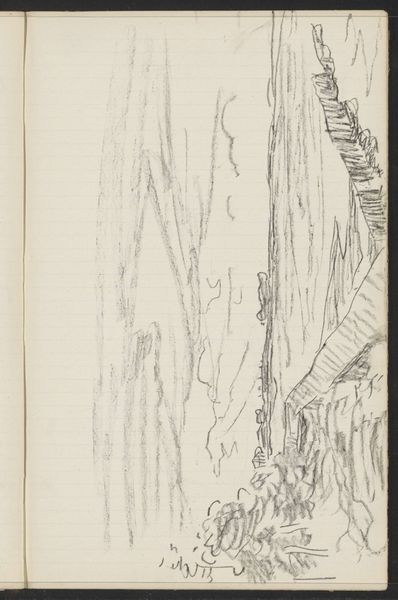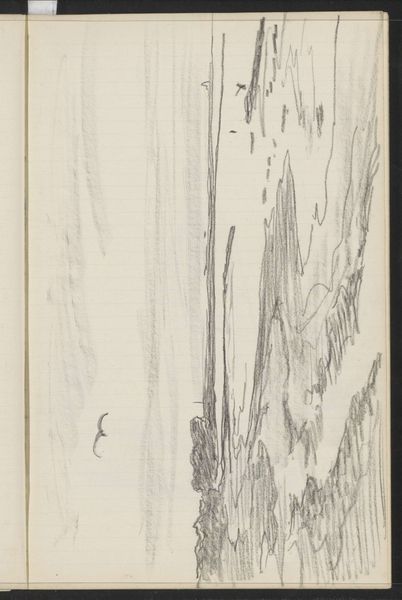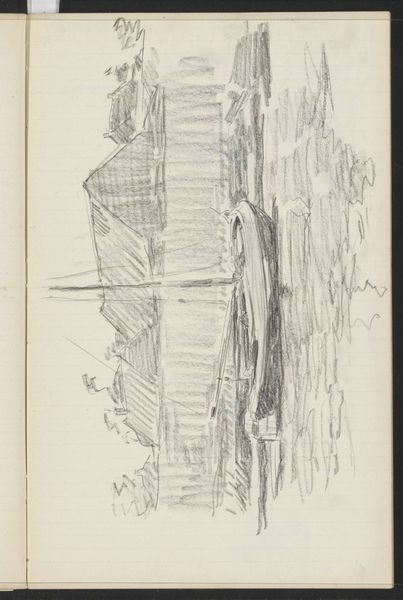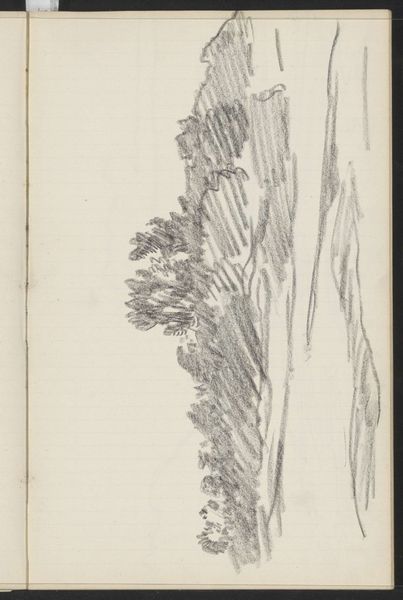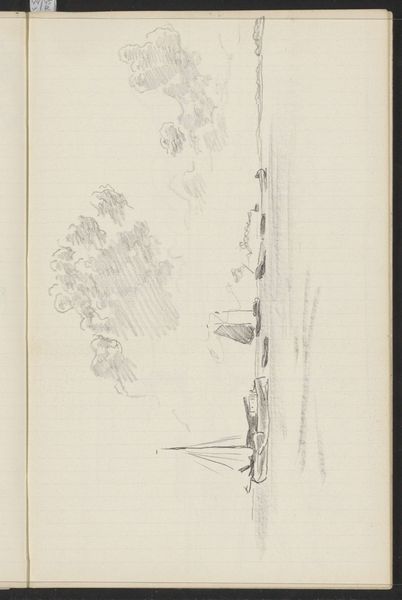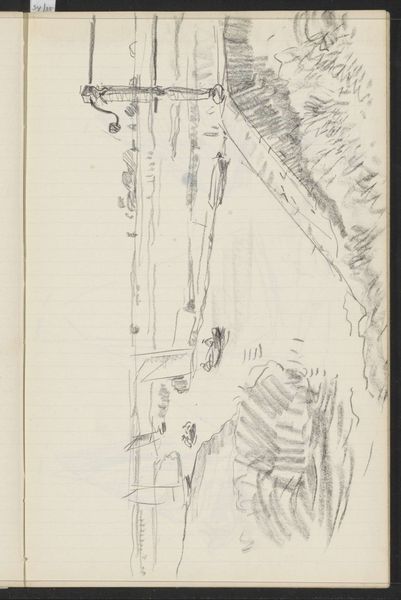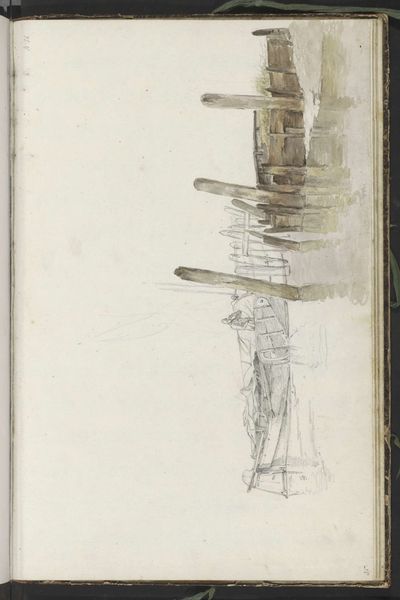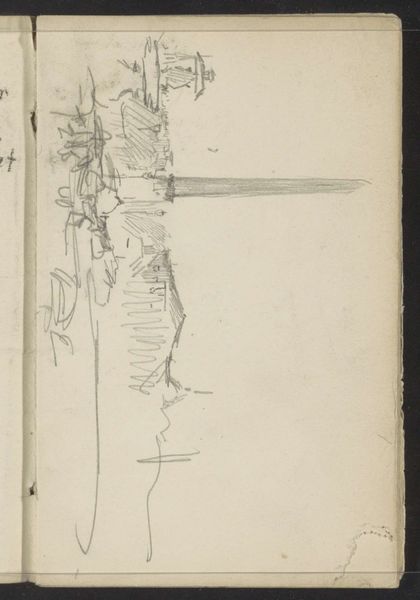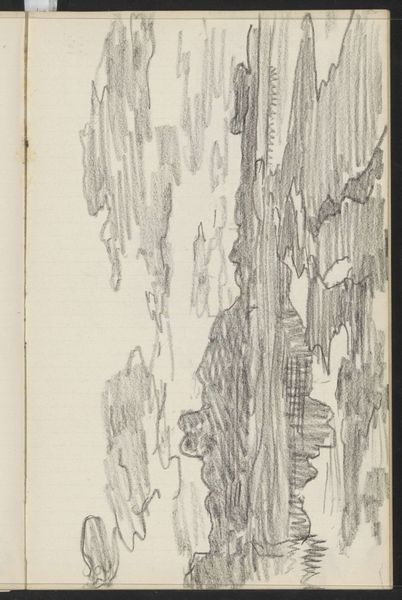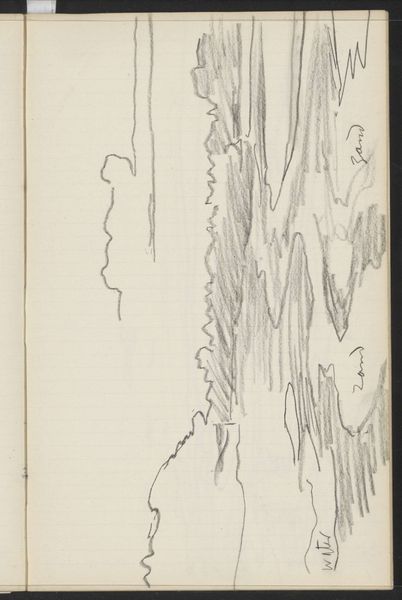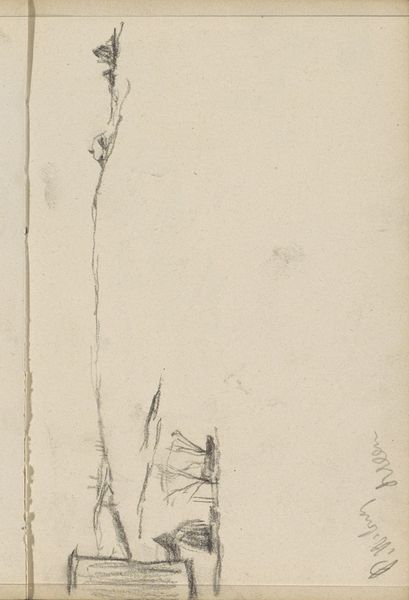
drawing, pencil
#
drawing
#
dutch-golden-age
#
pen sketch
#
landscape
#
pencil
#
realism
Copyright: Rijks Museum: Open Domain
Curator: Let’s delve into this intriguing pen and pencil sketch, "Bomschuiten op het strand van Scheveningen," attributed to Johannes Christiaan Schotel, dating somewhere between 1797 and 1838. You can currently find it in the Rijksmuseum. Editor: It has a ghostly quality. A bit like an etching, with very faint outlines giving structure to a quiet landscape, but so muted it's almost as if the image itself might fade from the page entirely. I sense a melancholy. Curator: I see it as an exploration of impermanence. The delicate lines might suggest fragility, the passing of time etched subtly. Note the “bomschuiten,” these fishing boats typical of Scheveningen, which carried their own weight in societal symbolism. They represented livelihoods, resilience against the sea’s caprices, a visible tradition now fading with changing times. Editor: That ties in with the overall composition; there’s a heavy foreground suggesting perhaps a town or city, the "bomschuiten" further back—and the whole scene kind of dwarfed by an expanse of empty space, which adds to the feeling of precarity and transition. Consider, too, Scheveningen’s history as a strategic point; fishing village meets site of naval skirmishes, implying human intervention upon natural space. How might this image subtly reflect early industrial encroachment, displacing traditional communities and ways of life? Curator: The very material suggests humility: pen and pencil instead of elaborate oils, almost like a fleeting thought captured, an unassuming medium carrying historical resonance. It also lends it the characteristic look and feel of drawings of the Dutch Golden Age. Do you find it has visual similarities to Dutch masters such as van Goyen and van de Velde? Editor: While certainly bearing hallmarks of the era in its subject matter and stylistic execution, it feels more modern in its openness and emotionality; it's a direct commentary on an existing world instead of something grand. In this respect, it resonates with critical realism in the arts, even this early. Schotel's vision isn't necessarily celebratory, is it? Curator: It might be a contemplation, an invitation to ponder a way of life, using simple strokes. I find it evokes quiet fortitude. The almost photographic realism adds veracity, like a historical document. Editor: It makes one contemplate our shifting relationship with landscapes, especially maritime ones—they have continuously served as both resource and battlefield, underscoring both their enduring beauty and precarious existence within capitalist extraction. Looking closer at it and through that lens changes one's perception. Curator: Precisely. Perhaps what seems simple reveals intricate layers upon sustained gaze. Editor: Yes. And like the ephemeral coastal settings it portrays, each viewing invites renegotiation and rediscovery of those layered meanings.
Comments
No comments
Be the first to comment and join the conversation on the ultimate creative platform.
